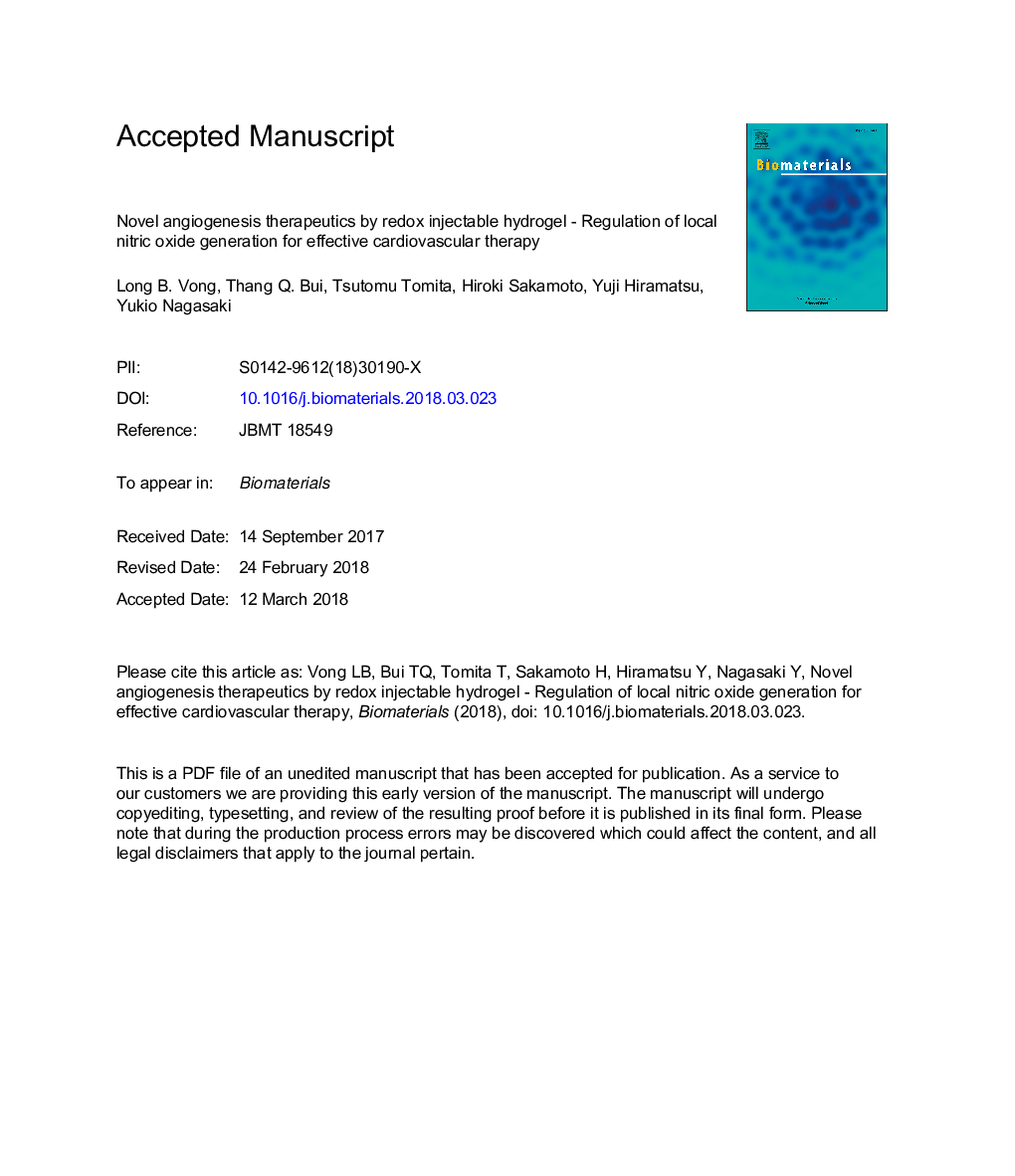| Article ID | Journal | Published Year | Pages | File Type |
|---|---|---|---|---|
| 6484540 | Biomaterials | 2018 | 39 Pages |
Abstract
Nitric oxide (NO) possesses various functions in cardiovascular diseases; however, due to an extremely short half-life and low bioavailability, its therapeutic application is limited. In inflamed tissues, overproduced reactive oxygen species (ROS) rapidly react with the endogenous NO, reducing its bioavailability. Here, we developed a controllable NO-releasing redox injectable hydrogel (NO-RIG) formed by the electrostatic crosslinking between the polyion complex flower-type micelles composing of functional polymers to scavenge overproduced ROS and regulate the local NO expression level simultaneously. After the intracardiac injection to mice, NO-RIG converted to gel via physiological temperature-responsive character, distributed homogeneously, and retained in the myocardial tissue for more than 10â¯d. Treatment with NO-RIG remarkably decreased the infarction size and improved the heart function after myocardial infarction when compared to control injectable hydrogels, such as a simple NO-releasing or ROS-scavenging injectable gels. We found that NO-RIG treatment significantly enhanced the angiogenesis and new blood vessels formation in mice through the regulation of the NO sustained release and redox equilibrium. NO-RIG presents high potential in preventing and treating cardiovascular diseases.
Related Topics
Physical Sciences and Engineering
Chemical Engineering
Bioengineering
Authors
Long Binh Vong, Thang Quoc Bui, Tsutomu Tomita, Hiroaki Sakamoto, Yuji Hiramatsu, Yukio Nagasaki,
